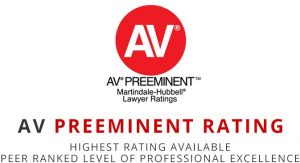Getting Rid of a Second Mortgage by Filing Chapter 13
Getting Rid of a Second Mortgage by Filing Chapter 13
It can be challenging to make ends meet when you are facing a budgetary crisis, such as unemployment, an illness, or a reduction in income. Unfortunately, one of the significant expenses for most families is their mortgage payment. When money becomes tight, you may let some payments go unpaid, like medical bills and credit card payments, to make the mortgage payment.
However, it can become difficult to make the mortgage payment when you must choose between making the mortgage payment and paying daily living expenses. Many homeowners miss one or two payments while assuming they will catch up the missed payments when their finances improve. Unfortunately, by the time things improve, the mortgage company is demanding a lump sum to catch up the past due payments, or it forecloses. What are your options?
Ignoring a Foreclosure?
If you ignore the foreclosure, it will not go away. The mortgage company will obtain a default judgment to sell your home. A better option is to learn about your options for stopping foreclosures so that you can keep your home. Filing a Chapter 13 bankruptcy case stops foreclosure and allows you to catch up your mortgage payments over three to five years. A Chapter 13 repayment plan makes it affordable to catch up past due payments, so you do not lose your home.
However, a Chapter 13 plan also gets rid of unsecured debts so that you can get back on your feet after a financial crisis. When you complete your bankruptcy case, the only debt you may have remaining is your mortgage loan because a Chapter 13 case can also get rid of car loans, tax debts, unpaid child support, most unsecured debts, and even second mortgages, in some cases.
Eliminating a Second Mortgage in Chapter 13
Second mortgages can make keeping a home impossible for some debtors. However, depending on the value of your home and the payoff of your first mortgage, you might be able to release the lien of the second mortgage for a fraction of the amount owed on the loan.
To get rid of a second mortgage in Chapter 13, you must demonstrate to the court that the value of your home is less than the amount owed on the first mortgage. However, if your home is worth just a dollar more than the amount you owe on your first mortgage, you cannot get rid of your second mortgage.
Because mortgage lenders oppose motions to value liens of second mortgages at zero, you may be required to pay the fee to obtain a written appraisal to present to the court at the hearing to establish the fair market value of your home is less than the payoff of your first mortgage. The second mortgage holder may also present evidence at the hearing to contradict your valuation of the home. Therefore, it is crucial that you work with an experienced Miami Lakes bankruptcy attorney who understands the requirements to value a second mortgage lien at zero.
What Happens to the Second Mortgage?
If you are successful, the lien of the second mortgage is released. The amount owed on the second mortgage becomes an unsecured debt. The mortgage lender receives the same percentage of the debt as any other unsecured creditor, including medical bills and credit cards. Therefore, if your plan includes a 20 percent payment to unsecured creditors, the lender receives 20 percent of the debt. The remaining balance owed is discharged when you complete your Chapter 13 plan.
Are You Ready to Get Out of Debt?
If you are struggling to pay your mortgage payment and other debts, you do not need to continue to struggle. A Chapter 13 bankruptcy filing can help you get out of debt and back on track. Our Miami Lakes bankruptcy attorneys help individuals and couples keep their homes and get out of debt.
Call Adams Law, P.A. at (305) 615-2905 or use the contact form on our website to schedule your free consultation today with a South Florida bankruptcy lawyer today.


